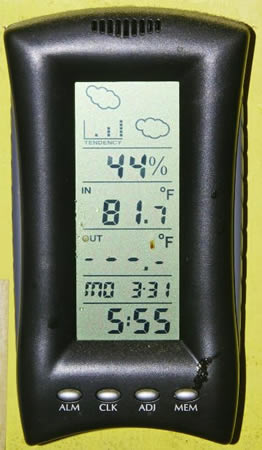Heating and Cooling
One of the essential systems that ensure the comfort and liveability in a home is its heating and cooling setup, which this section of the site deals with. It looks at the way in which we maintain the temperature in our homes so they are comfortable for us no matter what the weather is doing outside.
While making sure a building maintains a comfortable indoor temperature all year round is relatively easy with modern HVAC installations, the rising cost of energy is pricing many people out of this necessity. In the past decade or so, rising costs have caused many homeowners to rethink their interior climate control strategy.
Economy of Indoor Temperature Control
 Depending on where you live of course, there are going to be differences in outdoor temperature between the seasons of the year that can make it necessary to artificially generate a more pleasing climate indoors. In areas where there can be harsh weather conditions in summer (very hot) or winter (very cold), an adequately powered heating and cooling system installed in the home is common, although not all homes have this level of convenience.
Depending on where you live of course, there are going to be differences in outdoor temperature between the seasons of the year that can make it necessary to artificially generate a more pleasing climate indoors. In areas where there can be harsh weather conditions in summer (very hot) or winter (very cold), an adequately powered heating and cooling system installed in the home is common, although not all homes have this level of convenience.
Some homes lack a centrally controlled climate system such as a central heating and air conditioning system and have to make do with individual fireplaces or portable heaters in winter to stay warm and air conditioners or evaporative coolers or even just regular fans to keep cool in summer. Whichever way you look at it, it costs money to run these devices and some use a lot more energy than others.
Big hungry AC systems can use a huge amount of power during hot summers and this can cause serious problems for the household budget each year. For many families, being able to pay for running such systems can be way above their financial limits.
Finding Adequate Workarounds
When a family simply can't afford to run AC during the summer, a much cheaper alternative exists but only for those living in areas of low humidity. These are evaporative coolers which use around 1/20 the amount of power a comparable AC uses, but the downside is they won't work in high humidity.
Similarly, heating a house in winter that is not well insulated or has many large rooms with high ceilings can cost a small fortune in power costs if it happens to be in an area where the only available sources of energy are electricity or natural gas. Things can get cheaper in country settings where there is ample access to wood for wood fired furnaces, but to have to buy in logs when you live in a city can cost more than other fuels because high transportation costs add to the price.
The best way of dealing with costs is to work with what you have. If you live in an apartment in a city, then you're probably limited to whatever the building can provide for heating or cooling. If it's an older building, there may be no central system and you may have to make do with electrically powered heaters and coolers.
Some buildings have their own centrally powered forced air heating and cooling systems, but you may also be tied to what you are provided with and no more or no less. Getting out of the city and living in an independent house gives you more options, but with those options come extra expenses because now you have a larger building to heat or cool.
Finding a happy medium between providing comfort and paying for it can be tricky but possible with some ingenuity. That's what I aim to help you with in the several articles created under this section.
Articles
Take a look at the list of articles below that cover this topic with tighter focus and in greater detail: